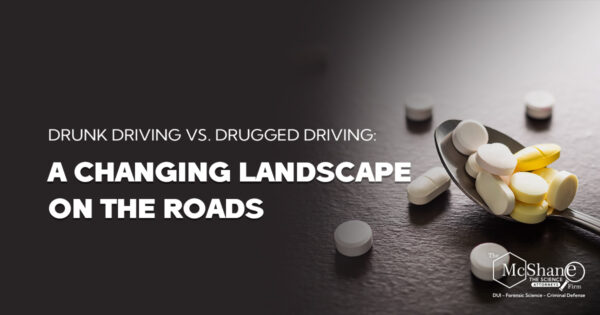Drunk driving has long been a major issue on the roads, with countless lives lost each year due to alcohol-related accidents. However, in recent years, there has been a growing concern about drugged driving, as more and more drivers are getting behind the wheel while under the influence of drugs.

According to data from the National Highway Traffic Safety Administration (NHTSA), the percentage of drivers involved in fatal crashes who tested positive for drugs has been steadily increasing in recent years. In 2016, for example, drugs were present in 43% of the fatally injured drivers who were tested, up from 28% in 2006. Meanwhile, the percentage of drivers who tested positive for alcohol has been declining over the same period, dropping from 41% in 2006 to 38% in 2016.
One reason for the rise in drugged driving is the changing patterns of drug use in society. While alcohol has been a widely used and socially acceptable substance for many years, drug use has historically been more stigmatized and associated with deviant behavior. However, with the proliferation of prescription painkillers, the rise of marijuana legalization, and the growing availability of other intoxicating drugs, drug use has become more commonplace and accepted in many circles.
At the same time, there has been a generational shift in substance abuse patterns, with younger generations more likely to use drugs than their predecessors. According to a survey by the National Institute on Drug Abuse, 14.4% of high school seniors reported using marijuana in the past month in 2020, up from 5.8% in 2007. Meanwhile, binge drinking rates among high school seniors have been steadily declining over the same period, dropping from 24.2% in 2007 to 13.6% in 2020.
Despite the growing prevalence of drugged driving, it can be more difficult for law enforcement to detect and prosecute than drunk driving. Unlike alcohol, which can be measured with a breathalyzer, drugs can only be detected through blood or urine tests, which are more invasive and time-consuming. Additionally, there is no universally accepted standard for what constitutes drug impairment, making it more difficult to prove in court.
In conclusion, while drunk driving remains a serious problem on the roads, the rise of drugged driving is a growing concern that must be addressed. With changing patterns of drug use in society and a generational shift in substance abuse patterns, it is essential that law enforcement, policymakers, and the public work together to combat this problem and keep our roads safe for everyone. By continuing to gather data, raise awareness, and promote safe driving practices, we can help prevent accidents and save lives.